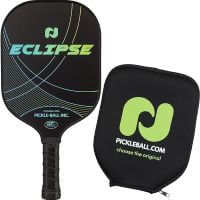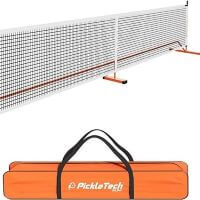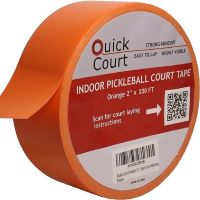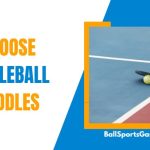Pickleball, a popular racquet sport, has gained immense popularity in recent years. As the sport continues to grow, enthusiasts are constantly looking for suitable surfaces to play on. One such option is an asphalt pickleball court.
In this article, we will delve into the benefits and disadvantages of playing pickleball on asphalt. Additionally, we will discuss the factors to consider when choosing a pickleball court surface, particularly for a backyard setting.
Can Pickleball Be Played on Asphalt? Yes, pickleball can be played on asphalt surfaces. Many communities, parks, and schools utilize existing asphalt courts for pickleball games due to their accessibility and affordability. The smooth and hard nature of asphalt allows for consistent ball bounces, making it a viable surface for pickleball.
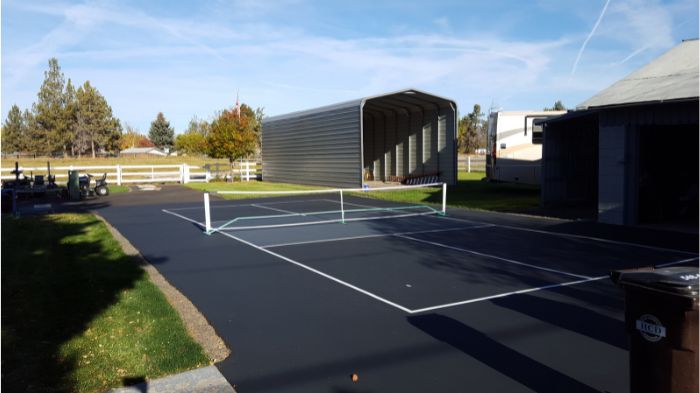
You Might Also Like:
Advantages & Disadvantages of an Asphalt Pickleball Court
Below is a table summarizing the benefits and disadvantages of an asphalt pickleball court:
| Benefits of an Asphalt Pickleball Court | Disadvantages of an Asphalt Pickleball Court |
|---|---|
| Affordability | Surface irregularities |
| Durability | Heat retention |
| Customizability | Maintenance |
| Quick installation |
Note: This table provides a concise overview of the benefits and disadvantages of an asphalt pickleball court. Further details and considerations may vary depending on specific circumstances and factors.
Advantages of an Asphalt Pickleball Court
- Affordability: One of the primary advantages of an asphalt pickleball court is its affordability. Compared to other court surfaces such as concrete or specialized sports surfaces, asphalt is generally more cost-effective. This makes it an attractive choice for individuals or communities with budget constraints.
The lower cost of installation and maintenance can make it more accessible for those looking to build a pickleball court without breaking the bank. - Durability: Asphalt is known for its durability and ability to withstand heavy use and harsh weather conditions. It is a strong and resilient material that can handle the demands of pickleball gameplay. With proper maintenance, an asphalt pickleball court can last for many years, providing a reliable and long-lasting playing surface.
This durability makes it a suitable choice for high-traffic areas or community courts where the court will be subjected to frequent use. - Customizability: Asphalt courts offer a certain level of customizability in terms of colors and line markings. While the base color of asphalt is typically black or dark grey, it is possible to add additional colors to create a visually appealing playing surface.
Line markings can be applied to clearly delineate the boundaries, service areas, and other important areas of the court. This allows for customization and personalization, giving the court a unique look and enhancing the overall playing experience. - Quick installation: Another advantage of an asphalt pickleball court is the relatively quick installation process. Asphalt can be laid down and cured more rapidly compared to some other court surfaces.
This means that Pickleball for Young Players can start enjoying their new pickleball court sooner, reducing the waiting time and allowing for immediate gameplay. The quick installation can be particularly advantageous for those eager to get started with their pickleball activities or for communities looking to provide a recreational space promptly.
Disadvantages of an Asphalt Pickleball Court
- Lack of Cushioning: One of the main drawbacks of an asphalt pickleball court is the lack of cushioning. Unlike some other surfaces, such as cushioned acrylic, asphalt does not provide much shock absorption. This means that players may experience increased joint impact when playing on an asphalt court, which can potentially lead to discomfort, especially for individuals with existing joint issues.
The harder surface of asphalt may result in a more jarring experience, putting additional strain on joints during intense gameplay. - Higher Impact on Balls and Paddles: The hard surface of asphalt can have a higher impact on pickleball and paddles compared to softer court surfaces. The constant pounding of the balls on the asphalt can lead to increased wear and tear, potentially reducing the lifespan of the balls.
Similarly, the paddles may also experience more stress and wear when used on an asphalt court. It is important for players to regularly inspect their equipment and replace worn-out balls or paddles to maintain optimal performance. - Limited Customization: Asphalt courts offer limited options for customization in terms of color and design. Typically, asphalt courts are black or dark gray in appearance, which may not be as visually appealing or distinctive as other court surfaces. This can limit the ability to personalize the court and create a unique playing environment.
However, some additional markings and lines can still be added to the court surface to indicate the boundaries and playing areas.
Considerations When Choosing a Pickleball Court Surface
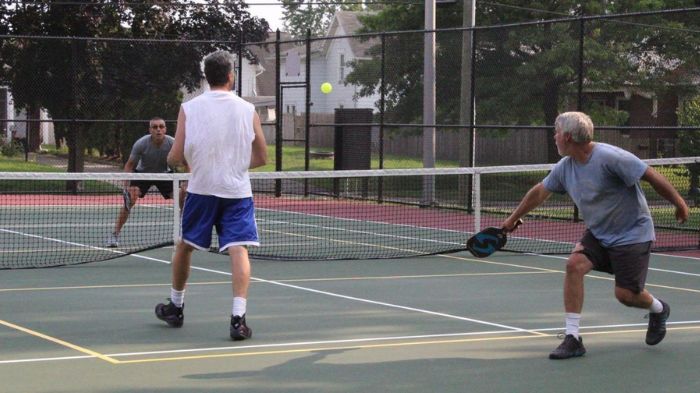
- Location: The location of the pickleball court is an important factor to consider when choosing a court surface. Take into account the climate and weather conditions of your area. Some surfaces may be more suitable for certain climates, while others may require more maintenance or be less resilient to extreme temperature fluctuations.
For example, in areas with freezing temperatures, surfaces that are prone to cracking or heaving, such as concrete, may not be the best choice. Consider the durability and performance of the surface in relation to your specific location. - Budget: Assessing your budget is crucial when selecting a pickleball court surface. Different materials have varying costs associated with initial installation and long-term maintenance. Consider the investment you can make and evaluate the costs of each surface option.
Factors such as material, size of the court, and any additional features or customization will impact the overall budget. It’s important to strike a balance between your budget limitations and the desired quality and durability of the court surface. - Player Preference: Consult with local players and seek their input on the surface they prefer. Different players may have varying preferences based on their skill level, playing style, and personal experiences. Speak with pickleball enthusiasts in your community or seek advice from local pickleball clubs or associations.
Their insights can help you understand the pros and cons of different surfaces and guide your decision-making process. Consider factors such as ball bounce, grip, and overall feel on the surface to ensure it aligns with the preferences of the players who will be using the court regularly. - Maintenance Requirements: Consider the maintenance needs of each court surface option. Some surfaces may require more frequent cleaning, resurfacing, or repair to maintain their performance and longevity. Assess the level of maintenance you are willing to commit to and the resources available to you. Proper maintenance is crucial for preserving the quality and safety of the court surface over time.
- Longevity and Warranty: Evaluate the expected lifespan of the different court surfaces and inquire about warranties provided by manufacturers or installers. Understanding the durability and warranty coverage can give you peace of mind and assurance that your investment will last.
Best Material for a Backyard Pickleball Court
- Concrete: Concrete is a popular choice for pickleball courts due to its durability and consistent playing surface. It offers a solid foundation that can withstand heavy use and is resistant to weather elements. Concrete courts can be customized with paint to delineate the boundaries and create a visually appealing look.
However, it is worth noting that concrete surfaces may have a higher impact on joints and can be less forgiving compared to surfaces with cushioning. - Cushioned Acrylic: Cushioned acrylic surfaces are specifically designed to provide shock absorption and reduce joint impact. These surfaces incorporate a cushioning layer that enhances player comfort and minimizes the risk of injuries. The cushioned acrylic surface offers a more forgiving playing experience, particularly for players with existing joint issues or those who prefer a softer feel underfoot.
However, it’s important to consider that cushioned acrylic surfaces may require more regular maintenance and upkeep to preserve their cushioning properties. - Modular Tiles: Modular tiles are another option for pickleball court surfaces. These interlocking tiles are typically made of durable materials such as high-density polypropylene. They are easy to install and can be placed on top of existing surfaces like concrete or asphalt.
Modular tiles offer good traction and are available in different thicknesses to suit varying playing preferences. They also provide the advantage of customization, as the tiles can be arranged to fit the available space and additional lines can be added to mark the boundaries and playing areas.
Also Know: Pickleball after knee replacement And Sweaty Hand in Pickleball
Final Thoughts
While pickleball can be played on asphalt, it is important to weigh the benefits and disadvantages of this surface before making a decision. Asphalt courts offer accessibility, affordability, and consistent ball bounces, but they lack cushioning and customization options.
When choosing a pickleball court surface, consider factors such as location, budget, and player preference. For a backyard court, materials like concrete, cushioned acrylic, or modular tiles may be more suitable, depending on your specific needs. Ultimately, the ideal court surface should provide a balance between playability, durability, and personal preference for an enjoyable pickleball

